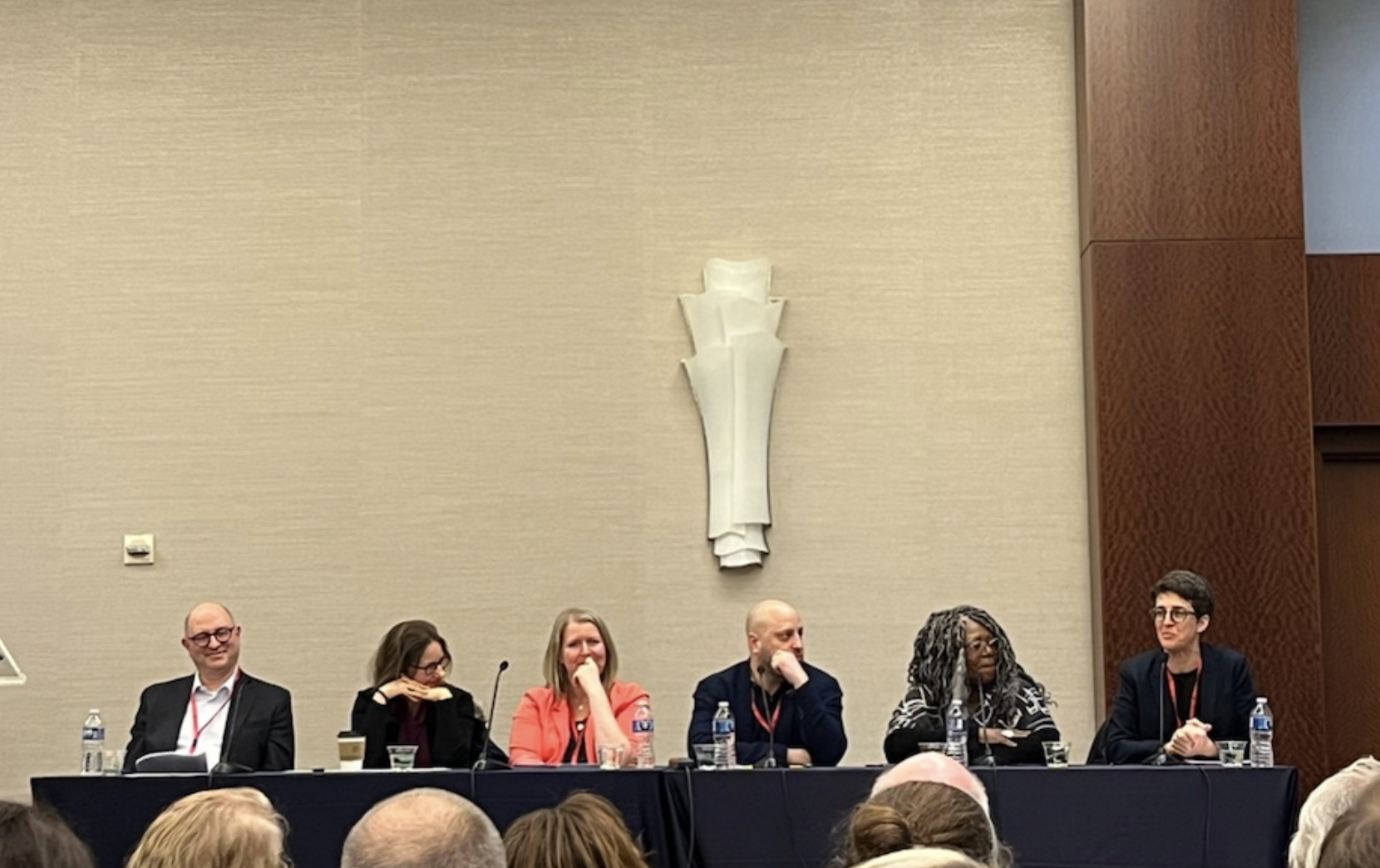
Picture from a well-attended session on the past and present of conservatism in America, featuring (among others) the broadcaster and author Rachel Maddow.
Several UCCS Faculty and MA Graduate Students in History attended the 2024 American Historical Association meeting in San Francisco. A good time was had by all! One attendee was Paul Zuluaga, an MA graduate student in History, who submitted this set of reflections on the conference.
As a novice student of history, I went to the conference with three primary goals: First, I wanted to gain a comprehensive understanding of the current state of the historical field and its prevailing trends. My second purpose was to actively network, to connect and engage with fellow students, faculty, and industry professionals both within the USA and globally. Lastly, I wished to explore potential areas of research, identify valuable resources, foster collaborations, and discover the wealth of ideas available at the conference.
In my goal to comprehend the current state of the historical field and its prevailing trends, I observed a diverse range of perspectives. Several trends caught my attention. The exploration of the role and implications of Artificial Intelligence (AI) in the field, along with its potential future functions immediately drew me in. The prevailing message conveyed a sense of cautionary optimism regarding its prospective role. This vision of the future manifested itself in various forms and utilities for historians. The continuing application of digital technology across all facets of historical study also emerged as a key trend. While digital uses are not new, their integration with AI and targeted applications present an emerging and exhilarating area of exploration. The anticipation of AI streamlining research timeframes and unveiling connections was a widely discussed topic. Finally, a notable emphasis was placed on themes of racism, Africa, and slavery. Out of a total of 320 panels at the AHA conference, approximately 56 distinct panels and discussions were dedicated to these themes, reflecting a significant focus within the AHA conference discourse.
I feel that my second goal to network, connect and engage was very rewarding. I attended at least eight panels, two social events, and three poster sessions that all provided opportunities to meet people involved in various efforts. I targeted panels that piqued my interest or had potential information for future research. The panel on techniques to use messy numbers and historical data was very informative. Another panel on digital technology to reconstruct and immerse observers virtually in historical structures was an example of this technology as a teaching tool. One of the panelists, Dr. Edward Holt from Grambling university presented the way in which his students use SketchUp1 and historical documents to reconstruct churches within the Iberian city of Cordoba. Surprisingly, the Poster Sessions provided three connections and potential areas of research within a short period of time as I walked from one presenter to another in the condensed space and time of these sessions. The receptions (or social events) were opportunities to meet fellow students and professors from universities across the country (even globally), and it was refreshing to meet and commiserate, encourage, and congratulate those who are on similar journeys.
My final goal of exploring areas of research, identifying resources, fostering collaborations, and discovering ideas available, was also a success. One unlikely connection for potential research that I discovered wasn’t part of any of the panels or even an attendee at the conference. I purchased a book at the at the “Exhibitor’s Hall” that I thought could be used to provide general information for the next research paper I am contemplating. Upon returning home, I decided to peruse the book Governor of the Cordillera, John C. Early. Among the Philippine Highlanders, by Shelton Woods. In the preface, I noted many commonalities between the author and myself. Shelton Woods is an Associate Dean and Professor of East/Southeast Asian History at Boise State University, and I contacted him (via email) to enquire about his research sources for his book and commented on our common past. He immediately responded and provided suggested sources and offered help for my research. All of these are beyond anything I expected and make me optimistic for the next steps.
Overall, this was a very productive and successful conference trip and I want to thank the UCCS History Department for this opportunity, especially Dr. Jimenez for her personal efforts that facilitated our attendance.
1. SketchUp is a 3D modeling software that allows users to create and manipulate 3D models of buildings, landscapes, furniture, and other objects. SketchUp is owned by Trimble Inc. https://www.sketchup.com/
